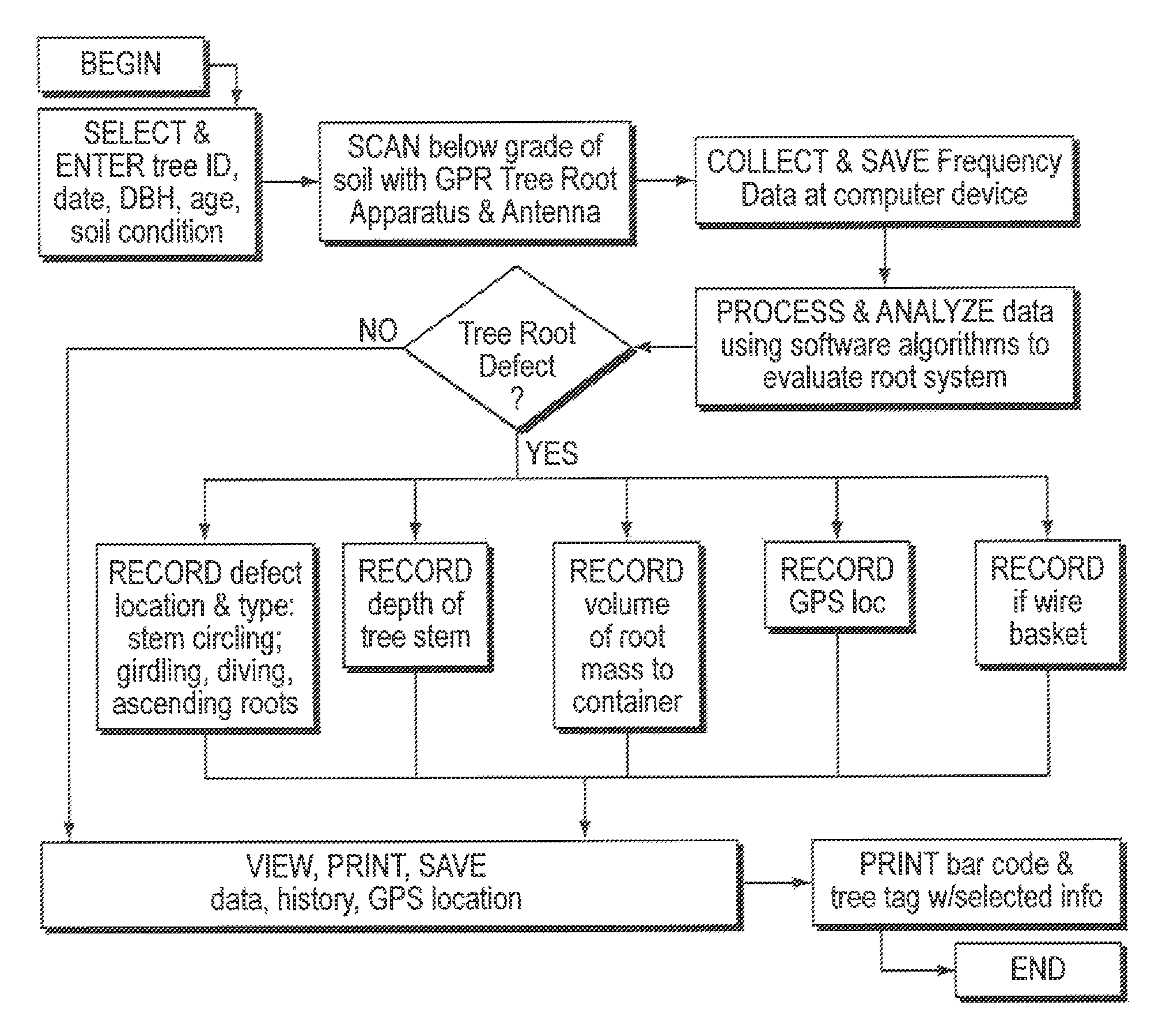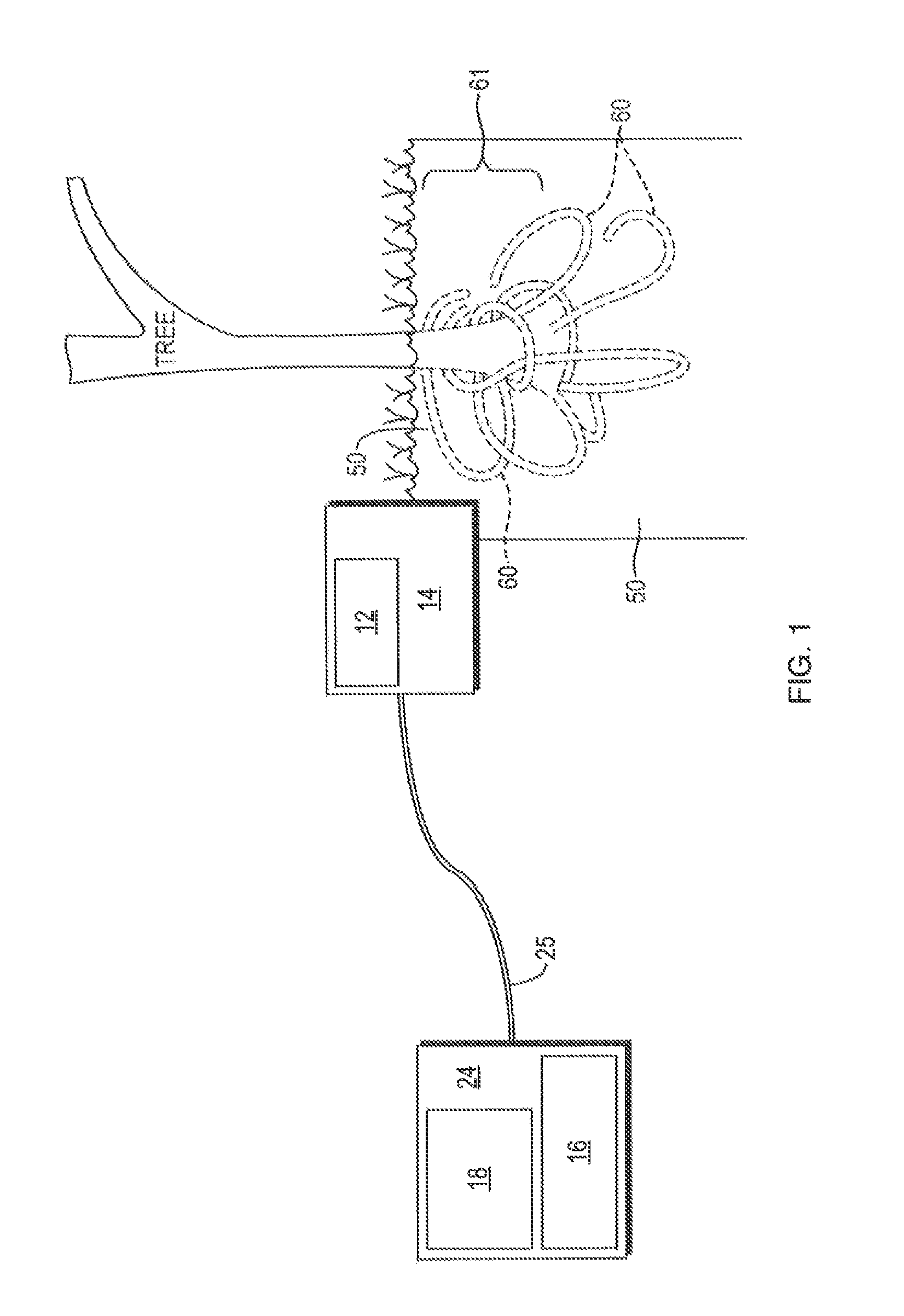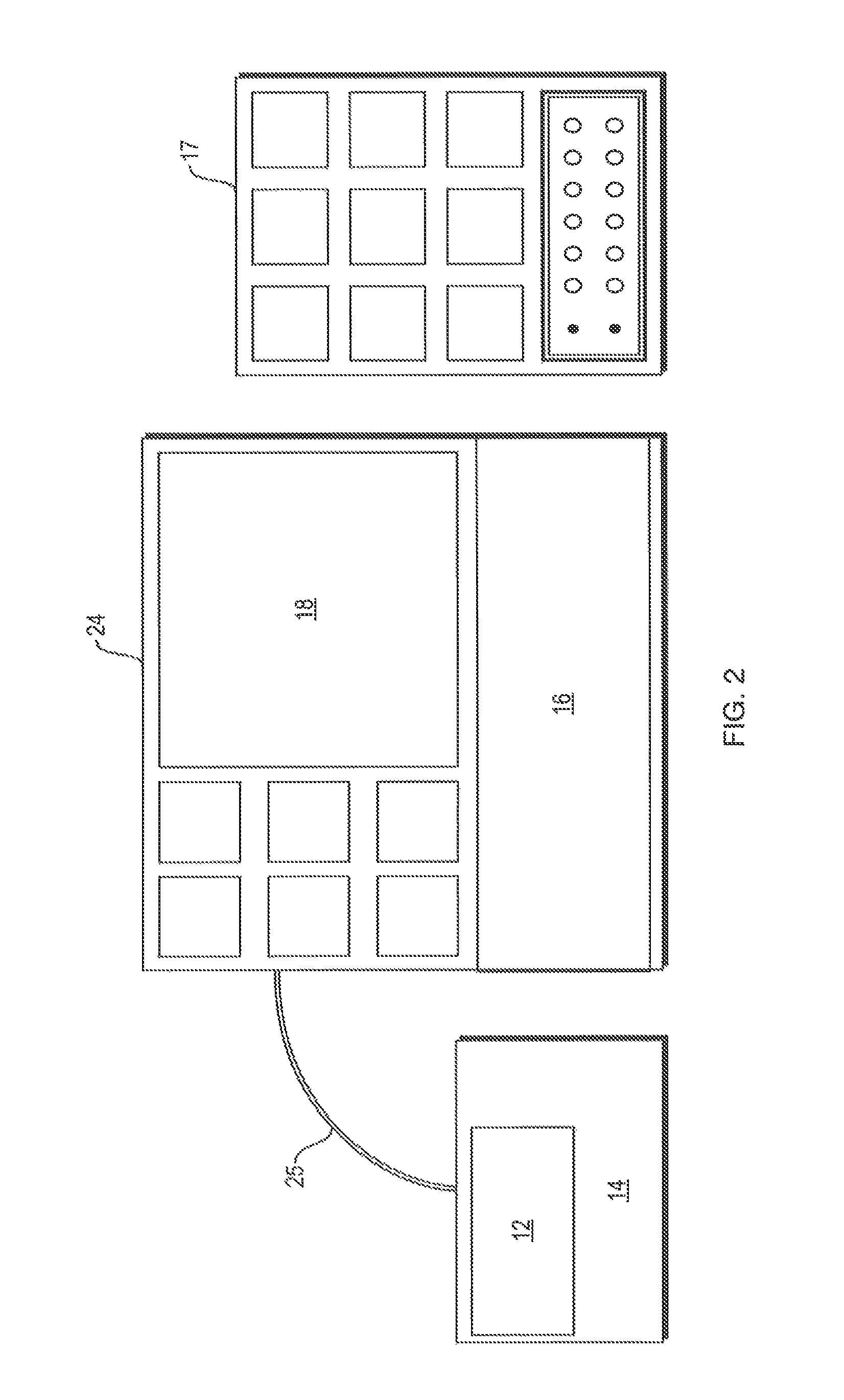TREES-tree root examination, evaluation and standardization
a tree root and evaluation technology, applied in the field of tree root examination, evaluation and standardization system, can solve the problems of more stress-related diseases and invasive pest problems, the majority of the trees we plant in our communities may never reach their full potential, and the smaller and shorter-lived trees have more difficulty coping with urban soil,
- Summary
- Abstract
- Description
- Claims
- Application Information
AI Technical Summary
Benefits of technology
Problems solved by technology
Method used
Image
Examples
Embodiment Construction
[0032]In one aspect, referring to FIG. 1, this invention, will be a ground penetrating radar (GPR) tree root apparatus 10 to detect, quantify and classify root complexities 60 of trees. This invention will also be a method to objectively evaluate the condition of tree roots 60 through analysis based upon industry standards.
[0033]This invention is relevant, but not limited to the tree nursery industry and urban forestry industry, also referred to as the green industry. Application of this invention will be relevant throughout all aspects of the tree nursery industry supply chain cycle. (for example: wholesale and retail supplier, homeowners, developers, landscapers, arborists, municipalities, foresters, ecosystems, environment)
[0034]With continued reference to FIG. 1, in one embodiment, the apparatus 10, according to the invention, will be used for examination or inspection of tree root 60 complexity prior to and / or following harvest of field grown stock at the suppliers' site and fo...
PUM
 Login to View More
Login to View More Abstract
Description
Claims
Application Information
 Login to View More
Login to View More - R&D
- Intellectual Property
- Life Sciences
- Materials
- Tech Scout
- Unparalleled Data Quality
- Higher Quality Content
- 60% Fewer Hallucinations
Browse by: Latest US Patents, China's latest patents, Technical Efficacy Thesaurus, Application Domain, Technology Topic, Popular Technical Reports.
© 2025 PatSnap. All rights reserved.Legal|Privacy policy|Modern Slavery Act Transparency Statement|Sitemap|About US| Contact US: help@patsnap.com



